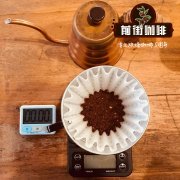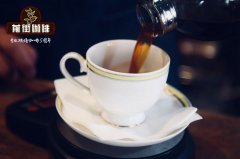Story of kopakama processing Plant in Rwanda-introduction to the characteristics of Rwanda washed bourbon Coffee

Professional coffee knowledge exchange more coffee bean information please follow the coffee workshop (Wechat official account cafe_style)
Coffee producing areas in Rwanda:
There are about 33000 hectares of coffee plantations in Rwanda, with 500000 people engaged in the coffee industry. With the good natural conditions of high altitude and fertile volcanic soil, the country's fertile soil and suitable climate contribute to plant growth, and coffee trees seem to be driven or forced to grow upward, or because they grow too fast to produce the best coffee beans. The beautiful country of thousands of hills Rwanda has a long and rich culture for growing highland coffee, mainly high-quality Arabica coffee. Rwanda is the only country in the world that can fully enjoy the harmony between soil-altitude-climate. In this unique growing environment, high-quality coffee from Rwanda has a distinctive taste and aroma. Bourbon coffee grown in Rwanda is one of the original varieties of Arabica coffee.
Friends who are familiar with coffee know that Rwanda is an important producing area of fine coffee in Africa. But to tell you the truth, Rwanda has always been a coffee producing area with a headache.
In 2013, when our cup testing class first started, it was impossible to find a good Rwanda-low quality and a lot of Chen Dou. As a result, the market's attention and purchasing power to the Rwandan producing areas are very limited.
But in fact, as early as 2008, Rwanda joined the COE raw bean evaluation program. From 2008 to 2013, raw beans from Rwanda have become the new favorite in the European and American markets.
The quality of others is not bad at all, but why is it so difficult to find a good Rwanda?
First of all, it is because the overall production of this Rwanda is low (as can be seen by its land area). This prevents Rwanda's beans from being as common as Ethiopia and Kenya, which are ubiquitous on the market.
Second, although Rwanda has high quality coffee, it is located in the interior of Africa, and transportation is a big problem. From Rwanda through Tanzania, and then from the Tanzanian port of Dar es Salaam. But because the coffee in Tanzania is cheaper and the law and order there is chaotic, it is often easy to be robbed or switched.
In addition, the war has also caused serious damage to the coffee industry in Rwanda. Even if many good beans are produced, they cannot be exported for various reasons.
The civil war and genocide in Rwanda in 1994 brought great disaster to Rwanda.
The demographic changes brought about by the massacre have made the once-poor country even worse, losing a large number of workers and the country's economy on the brink of collapse.
The Holocaust has also brought about great changes in the demographic structure of the country. Children under the age of 14 account for about 40% of the population, and many women become widows.
Therefore, frogs have paid special attention to Rwandan coffee beans since 2014, for teaching purposes on the one hand and sincerely hope to find some good Rwandan coffee to recommend to domestic coffee lovers on the other.
In March 2018, we finally met three kinds of raw beans from Rwanda at the Shanghai Exhibition. After many blind tests and comparisons, we chose one of the three, and finally pick washed the bourbon of this KOPAKAMA processing plant.
In terms of acidity, this Rwandan berry acid is unique, different from Ethiopian citrus acid and Kenyan berry acid, is "another kind of" characteristic African coffee performance.
In flavor, it has a concrete flavor of cherry and plum. In the whole producing area, only high-grade beans can have such flavor.
And to our surprise, this bean has a very good cleanliness-good cleanliness also means that this bean has a very exquisite handling in the picking process.
Later, when we learned that the bean used to be a regular customer of Rwanda COE TOP 10, it was no wonder that it was such a typical high-quality Rwandan boutique coffee: high sweetness, sour berries, clean, full, smooth, juicy, with plum and cherry flavors.
We were shocked when we learned the story behind this bean. If you have heard of the Rwandan Holocaust, you will know how hard this bean is:
This bean comes from the KOMAKAMA washing plant, and the coffee is made of red bourbon. The picking of these red bourbon is mainly collected by the members of the cooperative. This cooperative society not only grows coffee, they also help their members improve their lives.
For example, 180 widows who survived the 1994 Rwanda massacre formed a group under the cooperative to rebuild their coffee farms, and the money they earned will also be used to improve the lives of more difficult members. Today, the group has 302 women members.
We go to the coffee producing area to look for beans every year, whether in Ethiopia or in Yunnan, we always have a strong feeling: in mature coffee consuming countries, coffee may be the feeling of daily happiness; in our country, coffee is high-end and high-end; but in the country of origin, coffee is blood and sweat, even blood and tears.
Features of Rwandan Coffee:
The taste of Rwandan coffee is described as "grass aroma" with tropical climate characteristics. In addition to the sweetness of fruit, this coffee also gives people a feeling of freshness, clearness and freshness. Bourbon coffee grown in Rwanda is amazing for its sweet fruit, full-bodied, unrestrained and lingering aftertaste. This coffee has a delicious, citrus sweetness and a deep chocolate color.
END
Important Notice :
前街咖啡 FrontStreet Coffee has moved to new addredd:
FrontStreet Coffee Address: 315,Donghua East Road,GuangZhou
Tel:020 38364473
- Prev

2018 how to cook Rwanda coffee beans in Hu Yeshan _ introduction to the flavor characteristics of Rwanda washed bourbon coffee
Professional coffee knowledge exchange more coffee bean information please follow coffee workshop (Wechat official account cafe_style) Rwanda washed bourbon coffee, Rwanda is known as the country of a thousand hills, the whole territory is mountainous and plateau, most areas are tropical plateau climate and savanna climate, mild and cool. There are about 33000 hectares of coffee plantations and 500000 people are engaged in the coffee industry. Have a high altitude
- Next

Rwanda Ash Mountain treatment Plant Information introduction _ which brand of Rwanda washed red bourbon coffee tastes good?
Professional coffee knowledge exchange more coffee bean information please pay attention to the coffee workshop (Wechat official account cafe_style) Grey Mountain processing plant fine water washing, an example of Rwandan style. The Ash Mountain Water washing Plant in Rwanda is a private water washing plant founded by David Rubanzangabo. His insistence on quality has led to a corresponding sharp rise in the price of coffee, benefiting farmers. In the gray mountains.
Related
- Detailed explanation of Jadeite planting Land in Panamanian Jadeite Manor introduction to the grading system of Jadeite competitive bidding, Red bid, Green bid and Rose Summer
- Story of Coffee planting in Brenka region of Costa Rica Stonehenge Manor anaerobic heavy honey treatment of flavor mouth
- What's on the barrel of Blue Mountain Coffee beans?
- Can American coffee also pull flowers? How to use hot American style to pull out a good-looking pattern?
- Can you make a cold extract with coffee beans? What is the right proportion for cold-extracted coffee formula?
- Indonesian PWN Gold Mandrine Coffee Origin Features Flavor How to Chong? Mandolin coffee is American.
- A brief introduction to the flavor characteristics of Brazilian yellow bourbon coffee beans
- What is the effect of different water quality on the flavor of cold-extracted coffee? What kind of water is best for brewing coffee?
- Why do you think of Rose Summer whenever you mention Panamanian coffee?
- Introduction to the characteristics of authentic blue mountain coffee bean producing areas? What is the CIB Coffee Authority in Jamaica?

